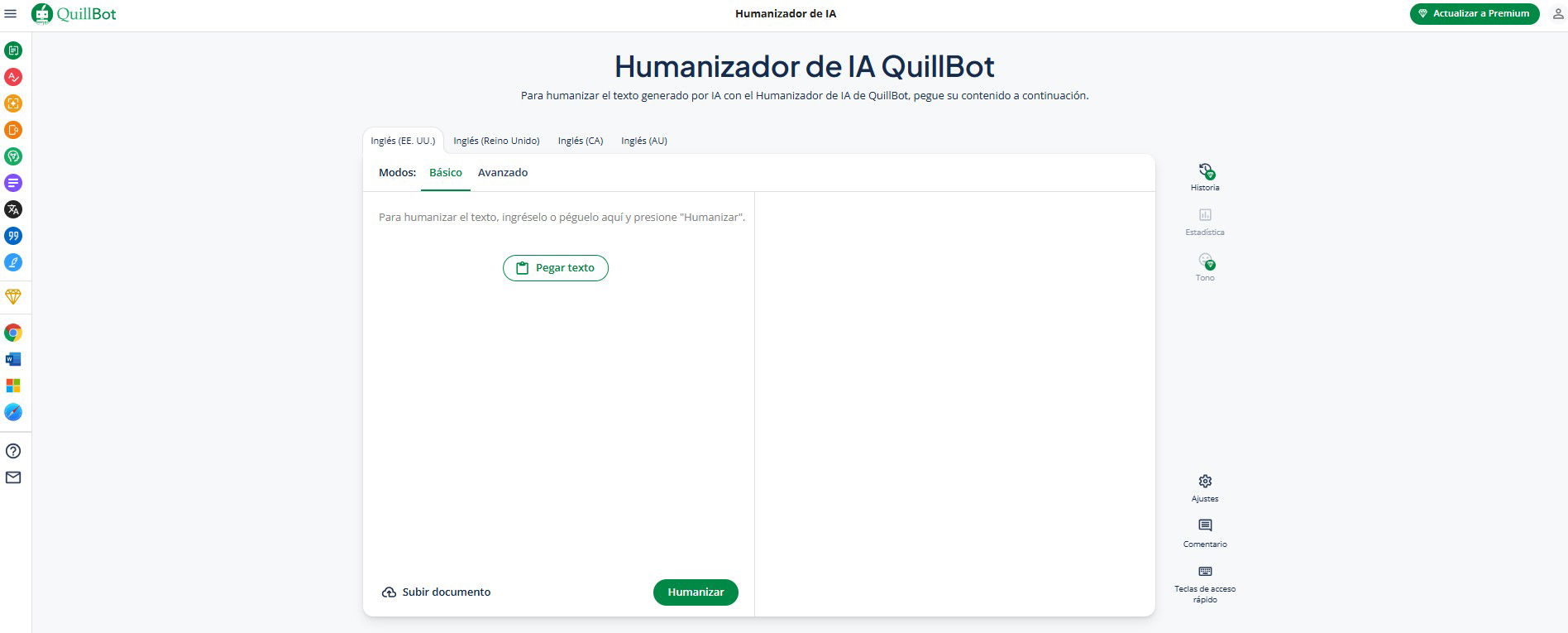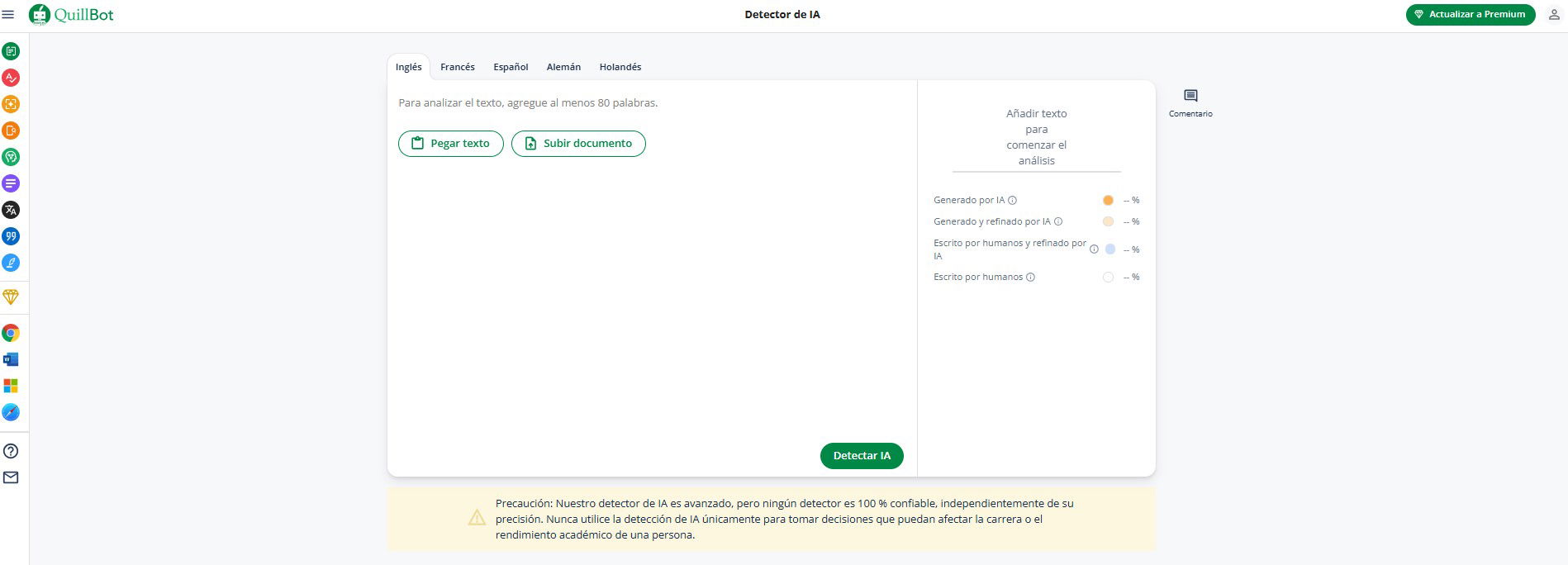QuillBot AI Humanizer and AI Detector: An In-Depth Analysis
"This post contains affiliate links. If you click on these links and make a purchase, we may receive a small commission at no extra cost to you. Thank you for supporting our work."
In today's digital age, artificial intelligence (AI) has transformed, even revolutionized, the way we generate written content. Tools like AI text generators provide examples of speed and efficiency never before achieved. However, the proliferation of AI-generated content has also highlighted concerns related to authenticity and originality. It is in this context that QuillBot emerges, a truly "multifunctional" platform that provides, on the one hand, an AI humanizer and, on the other, an AI detector; in other words, it sits at the junction of the two sides of the coin of this technology.
QuillBot's AI Humanizer is an extension for transforming content unintentionally generated by AI systems, such as that produced by extensive language models, in such a way that the text sounds more natural and human. While AI sometimes works against us by generating repetitive content with robotic, unsubtle, and even unstylized syntax, QuillBot's AI Humanizer, using advanced AI formulas and specific algorithms, rewrites or rephrases the content by varying the vocabulary, introducing more complex sentence structures, or adopting a more conversational tone. It can be very useful for content producers who want to use the power of AI by generating ideas, proposing or generating the first two drafts, and wanting to refine the final product, that is, a text written by AI but that ultimately resembles a human text.
The capabilities of QuillBot's AI humanizer go beyond mere synonymization. The tool investigates the context and meaning of the original text and, from there, makes modifications that contribute to fluency and coherence. Sentences can be transformed into active or passive voice, sentence length can be varied, the style can be modified according to the intended audience, and so on: in short, it optimizes AI-generated material, whether for blog posts, emails, reports, or presentations.
On the other hand, QuillBot's AI Detector would be a useful option for detecting whether a text has been obtained from AI language models. As the quality of AI-generated texts improves, it will become increasingly difficult to differentiate between human and artificial text. QuillBot's detector uses algorithms trained on available data (human texts and AI-generated texts) that enable it to detect features such as linguistic patterns, syntactical structures, and so on.
The ability to detect AI-generated content has significant implications in a variety of fields. For example, detecting AI-generated content helps maintain academic honesty and prevent plagiarism. In journalism, the ability to detect AI-generated content helps ensure the accuracy of news stories and prevent rumors from spreading, for example, through the dissemination of content generated by generative AI. In the business world, the ability to detect automatically generated text helps determine the level of originality of content contributed by third parties.
It's worth mentioning that the AI Detector, as well as the QuillBot Humanizer, are tools that are constantly being developed and improved. AI is advancing rapidly and progressively; consequently, text generation and the detection of artificially generated text are, yes, increasingly complex tasks. Therefore, the use of the aforementioned tools must be considered based on their capabilities but also their limitations. The QuillBot Humanizer significantly increases the naturalness of the generated content, but it cannot always ensure complete "humanization." Similarly, the QuillBot AI Detector can offer useful information, but it should not be considered an infallible detector.
QuillBot, in short, provides a set of extremely useful tools today, given the current boom in AI-based content creation. The Humanizer allows for a type of refinement and adaptation of artificially created text to achieve a more natural and human feel; the AI Detector provides an essential tool for assessing the artificial nature of written content. Understanding and effectively utilizing the above means that users can navigate this world of AI-based content creation with greater confidence and greater judgment.
Artificial intelligence has entered the world of online content creation, where we are learning how to leverage it to obtain what we are searching for quickly and efficiently. Even so, it is important to ensure that the resulting texts are neither artificial nor inauthentic. Are you interested in taking your writing to the next level but at the same time want to ensure that what you write is authentic in a digital environment increasingly dominated by AI itself?
Visit QuillBot and start your free trial! Try the AI Humanizer and Detector features and discover how they can change the way you write and check texts.
Make the shift to more natural and intelligent content creation with the help of QuillBot!
What did you think of this post?
Leave us your thoughts in the comments. Your feedback is invaluable to us!


